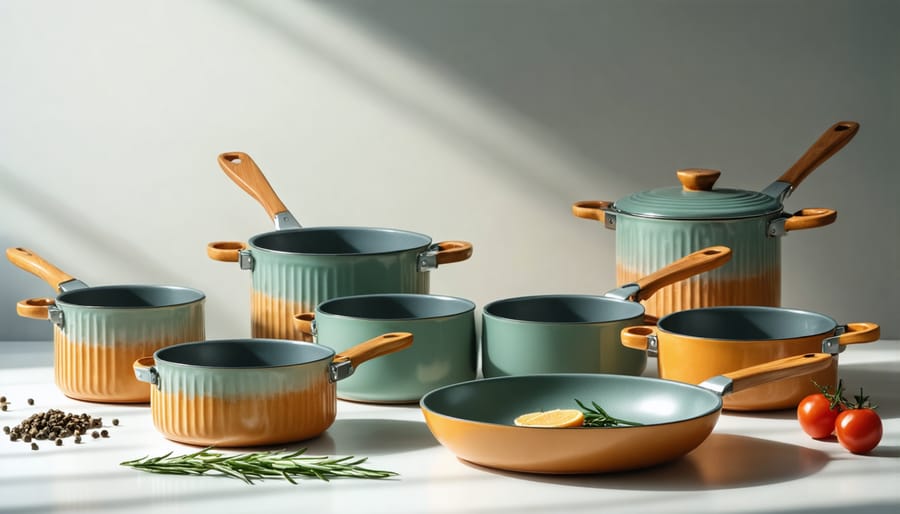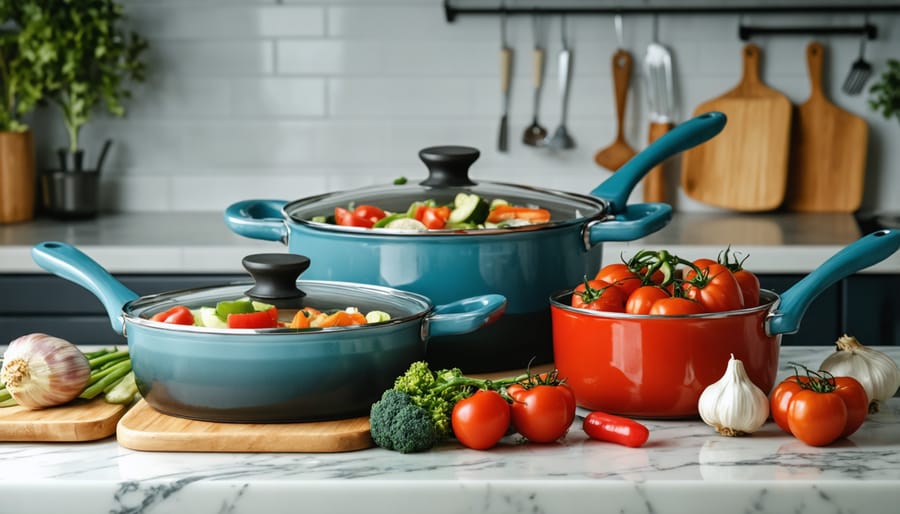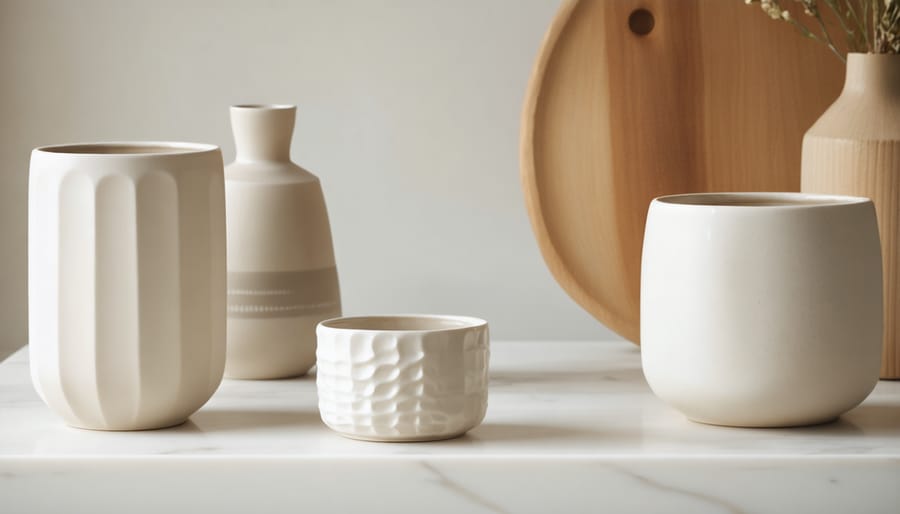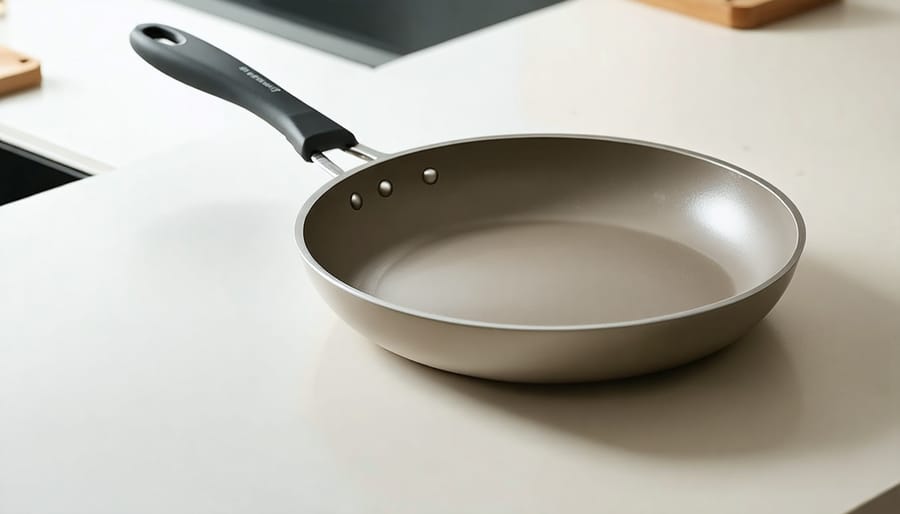Ceramic cookware stands at the crossroads of traditional cooking methods and modern kitchen innovation, offering home chefs a compelling alternative to conventional non-stick pans. This naturally derived, mineral-based coating has transformed from ancient pottery techniques into sophisticated cookware that promises both safety and performance. As health-conscious consumers increasingly scrutinize their cooking tools, ceramic options have emerged as a leading choice for those seeking non-toxic alternatives to traditional non-stick surfaces.
Yet, like any cooking investment, ceramic cookware presents a nuanced picture of advantages and limitations that deserve careful consideration. From its superior heat distribution and eco-friendly composition to concerns about durability and maintenance requirements, understanding these factors becomes crucial for making an informed purchase decision. Whether you’re a professional chef or a home cooking enthusiast, navigating the real-world performance characteristics of ceramic cookware can significantly impact your culinary experience and long-term satisfaction with your kitchen tools.
This comprehensive analysis delves into the essential pros and cons of ceramic cookware, providing you with practical insights to determine if these increasingly popular cooking vessels align with your cooking style, health priorities, and kitchen needs.
What Makes Ceramic Cookware Different?
Ceramic cookware stands apart from traditional cooking vessels through its unique construction and materials. Modern ceramic cookware typically consists of two main types: pure ceramic and ceramic-coated. Pure ceramic cookware is made entirely from natural clay, minerals, and quartz sand, kiln-fired at high temperatures to create a durable cooking surface. In contrast, ceramic-coated cookware features a metal base (usually aluminum or stainless steel) covered with a ceramic-based nonstick coating.
The ceramic coating, often referred to as sol-gel technology, is derived from silica (sand) and applied using a process similar to comparing kitchen surface materials. This creates a smooth, non-porous surface that’s naturally non-stick without the use of synthetic materials like PTFE (commonly known as Teflon).
What truly sets ceramic cookware apart is its heat distribution properties. The material heats evenly and maintains consistent temperatures, making it excellent for both high-heat searing and gentle simmering. The non-reactive nature of ceramic means it won’t leach metals or chemicals into food, even when cooking acidic ingredients like tomatoes or citrus.
The surface of ceramic cookware is exceptionally hard and scratch-resistant compared to traditional non-stick coatings. Its glass-like finish is non-porous, which not only prevents food from sticking but also makes it highly resistant to staining and odor absorption. This characteristic also contributes to its easy-clean properties, as food particles are less likely to become trapped in the surface.

The Benefits of Ceramic Cookware
Non-toxic Cooking Surface
One of ceramic cookware’s most significant advantages is its non-toxic nature. Unlike traditional non-stick pans that may contain PFOA, PTFE, or other potentially harmful chemicals, ceramic cookware features an inert, natural coating that won’t leach substances into your food. The surface is made from inorganic materials like silicon and oxygen, fired at high temperatures to create a stable, glass-like finish.
This natural composition makes ceramic cookware particularly appealing to health-conscious cooks and those with concerns about chemical exposure through cooking. The non-reactive surface means you can safely cook acidic foods like tomatoes and citrus without worry about metal leaching or unwanted chemical interactions.
Additionally, when properly maintained, ceramic coatings remain stable even at high temperatures, unlike some synthetic non-stick surfaces that can release fumes if overheated. This safety feature provides peace of mind for everyday cooking, making ceramic cookware an excellent choice for families and health-focused individuals who prioritize non-toxic kitchen equipment.
Superior Heat Distribution
Ceramic cookware stands out for its exceptional heat distribution capabilities, making it a favorite among both home cooks and professional chefs. The ceramic material naturally conducts heat evenly across the entire cooking surface, eliminating problematic hot spots that can lead to uneven cooking or burnt food.
The composition of ceramic allows it to heat gradually and maintain consistent temperatures throughout the cooking process. This steady heat distribution is particularly beneficial when preparing delicate dishes that require precise temperature control, such as sauces, custards, or temperature-sensitive proteins.
Unlike some traditional cookware materials, ceramic retains heat effectively even after the heat source is removed. This property not only helps keep food warm for serving but also contributes to energy efficiency in the kitchen. The even heating also means you can often cook at lower temperatures, reducing the risk of overcooking while preserving nutrients and flavors.
One notable advantage is that ceramic cookware performs well on multiple heating surfaces, including gas, electric, and glass cooktops. The material responds predictably to temperature changes, giving cooks better control over their culinary creations and helping achieve more consistent results.

Easy Maintenance and Cleaning
One of ceramic cookware’s most appealing features is its exceptional ease of maintenance and cleaning. The non-porous, smooth surface prevents food from sticking and makes cleanup remarkably simple – often requiring just warm water and mild soap. Unlike traditional cookware that may need vigorous scrubbing, ceramic surfaces typically wipe clean with minimal effort.
The non-stick ceramic coating eliminates the need for soaking or using harsh cleaning products, which not only saves time but also helps preserve the cookware’s integrity. Most ceramic pieces are dishwasher-safe, though hand washing is recommended to extend their lifespan. The smooth surface also resists staining and doesn’t absorb food odors or flavors, keeping the cookware looking and performing like new for longer.
Maintenance is straightforward – avoid using metal utensils that can scratch the surface, and store pieces carefully to prevent chipping. Regular cleaning with gentle products and proper storage are all that’s needed to maintain the cookware’s appearance and functionality. This low-maintenance nature makes ceramic cookware particularly attractive for busy households and anyone who values convenience without compromising cooking performance.
Potential Drawbacks to Consider
Durability Concerns
While ceramic cookware is often marketed alongside other durable kitchen surfaces, its longevity can be a significant concern for many users. The ceramic coating, while initially non-stick and attractive, typically has a shorter lifespan compared to traditional cookware materials like stainless steel or cast iron.
The primary durability issue stems from the ceramic coating’s vulnerability to chipping and scratching. Even with careful use, the surface can become damaged from metal utensils, stacking pans during storage, or sudden temperature changes. Once the coating begins to deteriorate, the non-stick properties diminish rapidly, and the pan’s effectiveness decreases.
Most ceramic cookware lasts between one to three years with regular use, though this varies depending on care and usage patterns. High-heat cooking, dishwasher cleaning, and improper storage can all accelerate wear. When the coating starts to flake or show visible damage, the cookware should be replaced to maintain food safety and cooking performance.
To maximize longevity, users should follow manufacturer care instructions carefully, use wooden or silicone utensils, and avoid extreme temperature fluctuations. Hand-washing and proper storage can significantly extend the life of ceramic cookware.

Temperature Limitations
Ceramic cookware demonstrates impressive temperature tolerance, typically handling heat up to 450-500°F (232-260°C) safely. This makes it suitable for most stovetop cooking, baking, and broiling tasks. However, it’s important to note that ceramic coatings can be sensitive to extreme temperature changes, which may lead to thermal shock and potential damage.
While ceramic cookware excels in even heat distribution and retention, sudden temperature shifts should be avoided. Don’t place a hot ceramic pan directly into cold water or transfer it from the refrigerator straight to a hot stovetop. Most manufacturers recommend gradually heating and cooling ceramic cookware to preserve its integrity.
Some high-quality ceramic pieces can withstand temperatures up to 800°F (427°C), but always check your specific product’s temperature limitations. Most ceramic cookware is oven-safe, though handles and lids may have different heat restrictions. For optimal performance and longevity, maintain temperatures within the manufacturer’s recommended range and avoid empty heating, which can damage the ceramic coating.
Cost Considerations
Ceramic cookware represents a diverse range of price points in the market, typically falling between standard non-stick and premium stainless steel options. Entry-level ceramic pieces start around $20-30 for individual pans, while high-end sets can reach $300-500. When considering ceramic cookware as part of your affordable kitchen solutions, it’s important to evaluate both initial investment and long-term value.
While quality ceramic cookware may cost more upfront than traditional non-stick options, its durability can offer better value over time. Most ceramic pieces last 3-5 years with proper care, compared to 1-2 years for standard non-stick cookware. However, this longevity depends significantly on usage patterns and maintenance practices.
Consider that ceramic cookware rarely requires replacement of non-stick coatings, potentially saving money in the long run. Yet, cheaper ceramic options may chip or wear more quickly, necessitating earlier replacement. When budgeting, factor in the complete set of pieces needed for your cooking style, as building a collection gradually can help distribute costs. Premium brands often offer warranties, which can justify higher initial prices through guaranteed performance and potential replacements.
Making the Right Choice for Your Kitchen
When it comes to choosing the right cooking surface, your specific cooking habits and lifestyle should guide your decision. Start by considering your cooking frequency and typical meal preparation methods. If you primarily cook at low to medium temperatures and prefer healthier cooking with less oil, ceramic cookware could be an excellent choice.
Budget considerations are crucial, but remember that quality ceramic cookware is an investment. While premium options may cost more initially, they often provide better durability and performance. Look for cookware from reputable manufacturers who offer solid warranties and have positive customer reviews.
Consider your stovetop type as well. While most ceramic cookware works well on gas and electric ranges, not all are compatible with induction cooktops. If you have an induction stove, ensure your chosen cookware has a magnetized base suitable for induction cooking.
Size and weight are also important factors. Ceramic cookware tends to be heavier than traditional non-stick options, so ensure you’re comfortable handling the pieces you select. A basic starter set might include a large skillet, a saucepan, and a Dutch oven – essential pieces that cover most cooking needs.
Pay attention to the coating quality and construction. Look for cookware with a thick, well-applied ceramic coating and a heavy-gauge base for even heat distribution. The handles should be securely attached and heat-resistant.
For those concerned about maintenance, consider how much time you’re willing to dedicate to cookware care. While ceramic cookware is generally easy to clean, it requires careful handling to prevent chipping and maintain its non-stick properties. If you’re looking for extremely low-maintenance options, you might want to combine ceramic pieces with other cookware types.
Remember that different manufacturers use varying quality standards and coating techniques. Research the brand’s reputation and manufacturing process before making your final decision. Some brands offer additional features like reinforced rims or ergonomic handles that might better suit your needs.
Ceramic cookware offers a compelling mix of benefits and considerations for home cooks and professional chefs alike. Its non-toxic, non-reactive surface makes it an excellent choice for health-conscious consumers, while the naturally non-stick properties allow for low-fat cooking without artificial coatings. The aesthetic appeal and variety of colors available make ceramic cookware an attractive addition to any kitchen.
However, it’s important to weigh these advantages against the potential drawbacks. The higher initial cost, susceptibility to thermal shock, and need for careful handling require thoughtful consideration. While ceramic cookware’s durability can be excellent with proper care, it demands more attention than some alternative materials.
Based on our comprehensive analysis, ceramic cookware is particularly well-suited for those who prioritize chemical-free cooking, appreciate even heat distribution, and are willing to invest time in proper maintenance. For best results, we recommend:
– Choosing high-quality pieces from reputable manufacturers
– Following manufacturer care instructions carefully
– Using appropriate utensils and cooking temperatures
– Implementing proper storage practices to prevent chipping
– Starting with a few essential pieces before investing in a complete set
When properly maintained, ceramic cookware can provide years of safe, efficient, and enjoyable cooking experiences. Consider your cooking style, maintenance preferences, and budget when deciding if ceramic cookware is the right choice for your kitchen.










